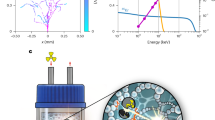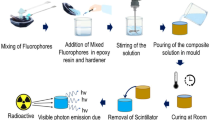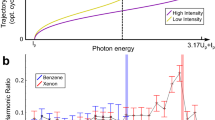Abstract
THE absolute standardization of pure β-emitters by 4πβ-counting involves errors due to uncertainties in self-absorption. This difficulty may be overcome by the use of the efficiency-tracing technique described by Campion et al.1. The technique involves the inclusion of a suitable β-γ-emitting nuclide with the pure β-emitter in the deposited source and the use of β-γ-coincidence counting to determine the efficiency of detection of the betas arising from the β-γ or ‘tracer’ nuclide. Knowledge of the β-efficiency for the tracer in a series of sources may then be used to determine the absolute activity of the pure β-emitter.
This is a preview of subscription content, access via your institution
Access options
Subscribe to this journal
Receive 51 print issues and online access
$199.00 per year
only $3.90 per issue
Buy this article
- Purchase on SpringerLink
- Instant access to full article PDF
Prices may be subject to local taxes which are calculated during checkout
Similar content being viewed by others
References
Campion, P. J., Taylor, J. G. V., and Merritt, J. S., Intern. J. App. Rad. and Isotopes, 8, 8 (1960).
Author information
Authors and Affiliations
Rights and permissions
About this article
Cite this article
GORSUCH, T., JENKINS, D. & LUDBROOK, C. Use of Complex Ions in the Efficiency Tracing Method for the Standardization of Pure Beta-emitting Nuclides. Nature 199, 368 (1963). https://doi.org/10.1038/199368a0
Issue date:
DOI: https://doi.org/10.1038/199368a0



